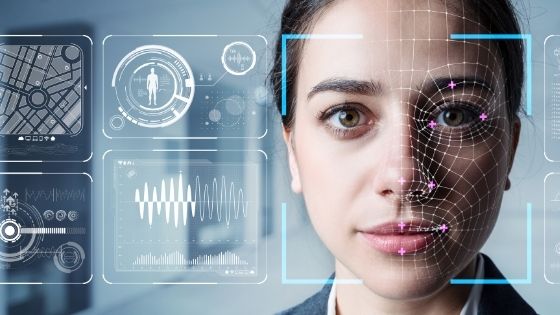Facial recognition technology is not a new term anymore. In this fast-moving world, its use has greatly increased. Be it a mobile unlocking or employee attendance system about every authentication system is using facial recognition. Powered with AI and ML algorithms, facial recognition technology is becoming more mature and accurate.
What is Facial Recognition Technology?
It is a type of biometric verification in which a person’s identity is confirmed by facial features. A facial identification system can scan faces from images, videos, and in real-time. For identity verification of an individual, it examines the image on the id document and confirms it with the live facial selfie.
Other biometric authentication methods are voice, fingerprint, and eye scanning. These methods are also used as per their need. For instance, mobile phones utilize both facial recognition and fingerprint verification. Both these methods are well appreciated by phone users.
How Facial Recognition Works?
Face Detection
First, it identifies the face in the image. In the case of videos or live selfies, it recognizes the area where the required face is.
Face Capture
It concerts the face features information into the digital data. Facial characteristics like nose position and shape, skin color and depth, and between eyes create a unique digital value.
Verify
It checks that two faces belong to the same person by comparing the digital codes of both faces. Biometric verification always uses fuzzy matches because there are very few chances of a full match. The face capture data of the same person can’t have equal value. The advanced biometric scanners are matured enough to catch any fraudulent attempt.
Some other features of facial authentication are discussed below:
Facial Emotion Recognition
You might have seen the selfie feature like “click by a smile” or “click by blink”. This trait is obvious in the latest mobile phones. Users do not have to press the button for a selfie. It incorporates facial emotion recognition technology. This technology identifies the mapping of emotions like joy, anger, surprise, anxiety, fear, and sadness. Investigations agencies also use emotion biometrics while interrogating criminals. It is separate from facial recognition where the motive is to verify a person, not emotions.
Age Verification
Verifying the age of customers either online or offline is crucial for businesses dealing with age-restricted products. For instance, alcohol stores, tobacco shops, and medicine companies need strict age verification. Normally it is done through id documents but if it incorporates facial recognition, the results will be more accurate.
Advantages of Facial Recognition
Better Security
Police and security agencies get help from facial recognition in identifying criminals and terrorists. Businesses use it to identify and verify their customers. Likewise, banks use facial recognition for Know Your Customer verification. This enhances the security level of bank accounts. All financial institutions are obliged to perform KYC on every new customer. Through an online facial recognition system, they can conduct automated KYC in real-time.
Live Presence
Other authentication methods like passwords or tokens do not verify the live location of the person. He must be present in front of the scanner for successful verification. It eradicates the chances of spoof attacks.
Faster Processing
Time is the most significant thing for businesses and their customers. They always demand more quick processing. Facial identification verifies a person in just 30 to 60 seconds. The pressure is completely robust and electronic. There is zero manual intrusion in it. From start to end all the processing is done by machine.
Summing It Up
There is no doubt that facial identification is a more secure and reliable way of authenticating. Password-based authentication has many flaws, like poor information security or memorizing them all. Also, users have to change their passwords if stolen or forgotten. At the same time, biometrics give seamless authentication security. The biometric data can’t be stolen or copied easily. Facial biometric scanners are not very expensive today and can be deployed quickly. A touchless feature of it will give a more smooth and convenient user experience.

